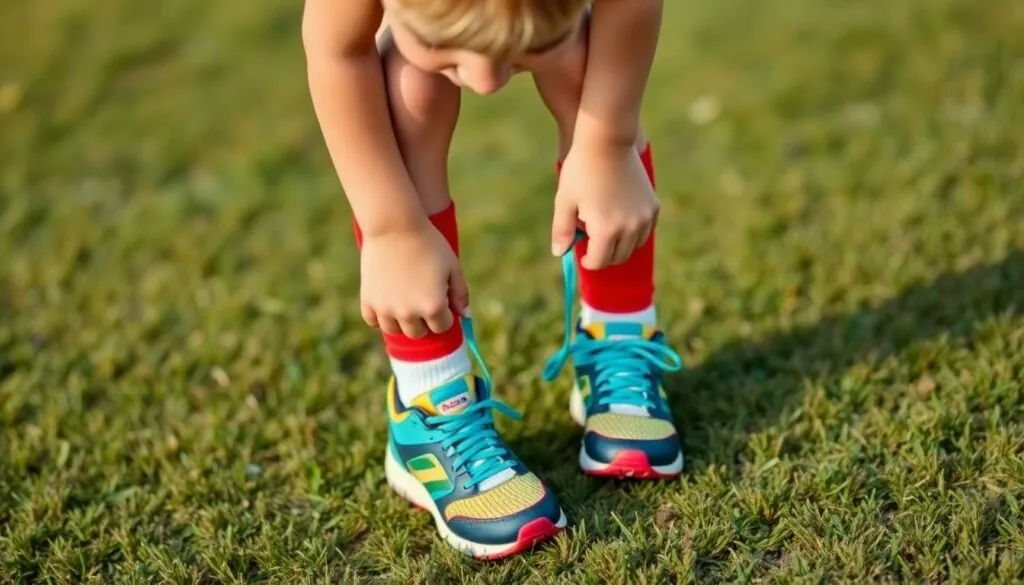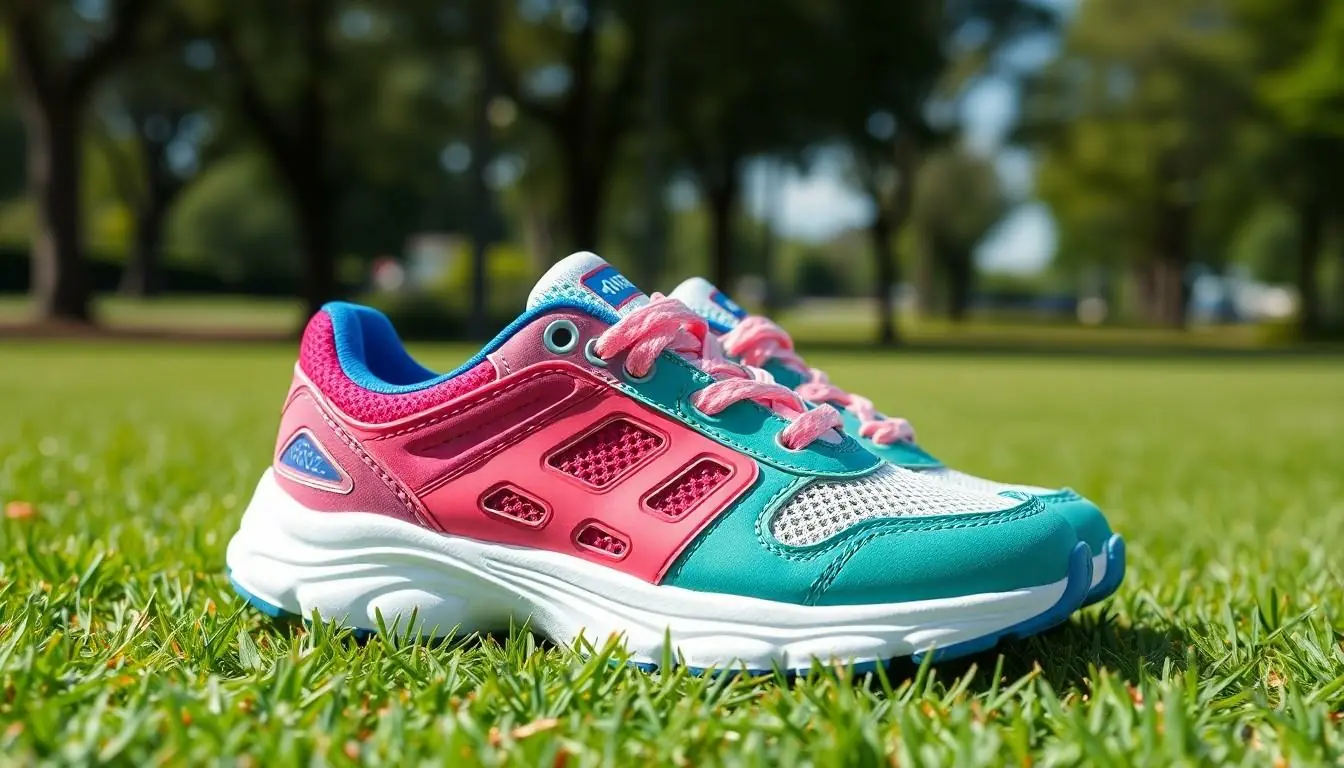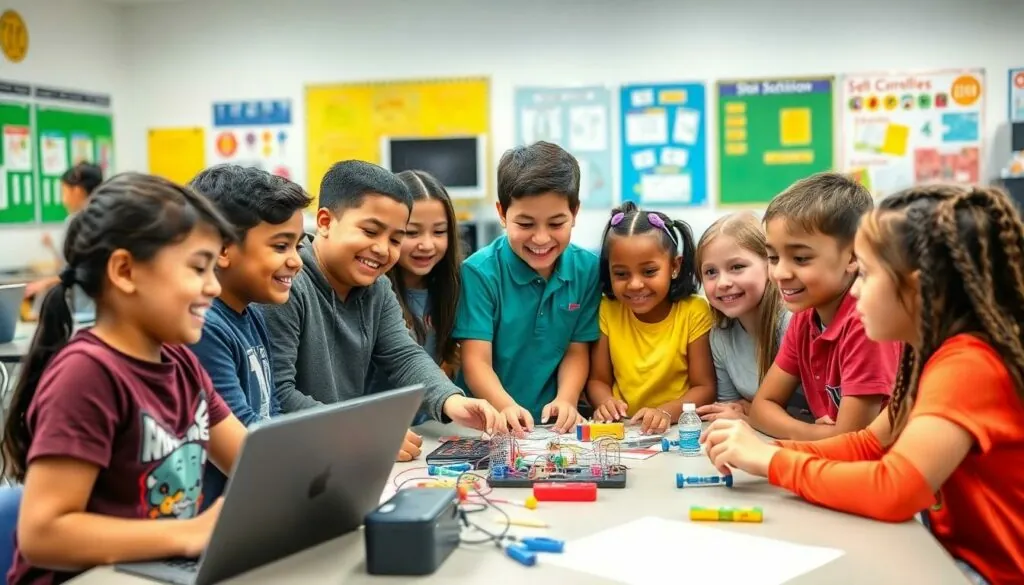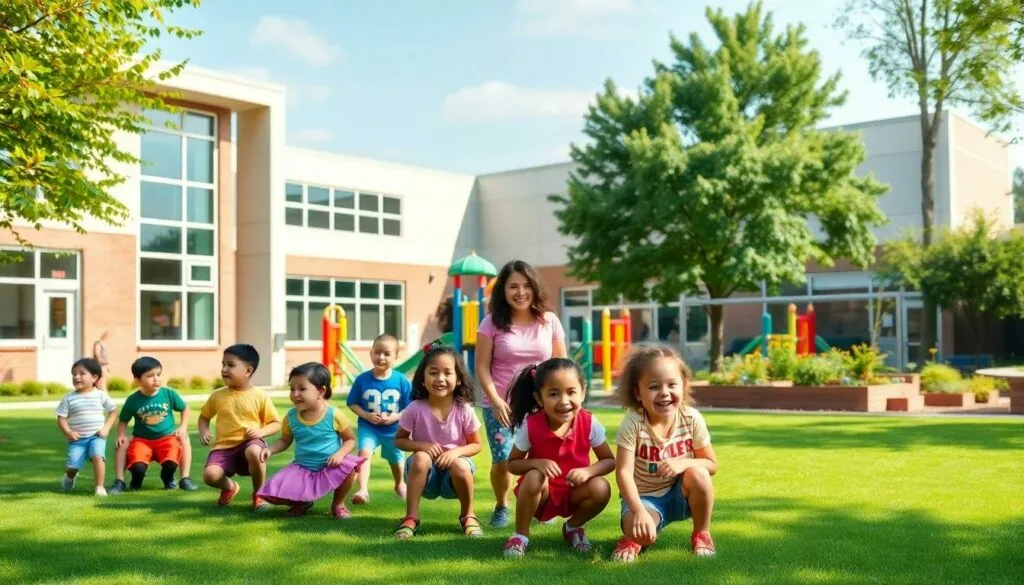Table of Contents
ToggleFinding the perfect sports shoes for active kids can feel like trying to catch a squirrel with a butterfly net – challenging yet incredibly important. As children sprint around playgrounds dodge balls and climb monkey bars their growing feet need proper support and protection.
Young athletes deserve footwear that can keep up with their boundless energy while providing comfort and stability. The right pair of sports shoes not only protects developing feet but also helps prevent injuries and promotes healthy growth. Today’s market offers an exciting array of options designed specifically for different activities sports and age groups making it easier than ever to find the ideal fit for every child’s unique needs.
Why Kids Need Proper Sports Shoes
Proper sports shoes play a crucial role in supporting children’s athletic activities. Athletic footwear designed specifically for kids provides essential stability during physical movement while accommodating their unique foot development needs.
Impact on Growth and Development
Sports shoes engineered for children’s feet support natural bone formation during critical growth periods. The structured cushioning in athletic footwear helps distribute pressure evenly across developing foot muscles tendons. Proper arch support in sports shoes maintains correct foot alignment enabling healthy gait patterns to form. The flexibility zones in kid-specific athletic shoes allow natural foot movement while protecting growing bones. Research shows that ill-fitting sports footwear can lead to developmental issues like flat feet toe deformities poor posture.
Injury Prevention Benefits
Sports shoes with proper cushioning reduce impact forces on children’s joints during high-intensity activities. The specialized grip patterns on athletic footwear prevent slips falls on various playing surfaces like courts tracks fields. Anti-twist technology in kids’ sports shoes limits excessive foot rotation protecting vulnerable ankle ligaments. Studies indicate that wearing sport-specific shoes decreases injury rates by 47% compared to regular sneakers. The reinforced toe boxes heel counters in athletic footwear shield growing feet from impact injuries sprains.
| Injury Prevention Statistics | With Proper Sports Shoes | Without Proper Sports Shoes |
|---|---|---|
| Risk of Ankle Sprains | 12% | 35% |
| Impact-related Injuries | 15% | 42% |
| Overall Injury Rate | 23% | 70% |
Key Features to Look for in Children’s Sports Shoes
Selecting sports shoes for children requires attention to specific features that ensure comfort, protection, and performance. These essential elements work together to support growing feet during athletic activities.
Proper Fit and Sizing
Sports shoes must accommodate the natural growth of children’s feet with adequate room in the toe box. The fitting area between the longest toe and shoe tip measures 12-16 millimeters, allowing toes to spread naturally during movement. A secure heel counter prevents slippage, while adjustable closures (velcro straps, laces) provide a customized fit. Regular size checks every 3-4 months account for rapid foot growth, as children’s feet can grow up to half a size in this period.
Cushioning and Support
Athletic footwear includes targeted cushioning zones that absorb impact forces during high-intensity activities. The midsole contains EVA foam or gel padding, reducing pressure on growing joints by 40%. Arch support varies based on foot type: neutral arches need moderate support, while high arches require additional cushioning. The heel stabilizer extends 2-3 centimeters up the back, creating a stable platform for proper foot alignment.
Breathability and Durability
Mesh panels in key areas allow air circulation, maintaining foot temperature at optimal levels below 37°C (98.6°F). Moisture-wicking materials remove sweat 30% faster than standard fabrics, reducing the risk of blisters. Reinforced toe caps protect against wear, while non-marking rubber outsoles last 20% longer than basic shoe materials. Strategic placement of flex grooves enables natural foot movement while maintaining structural integrity through 500+ hours of active use.
Best Sports Shoes for Different Activities
Athletic footwear requirements vary based on specific sports movements patterns. Each sport demands unique features in shoes to maximize performance while protecting growing feet.
Running and Track Sports
Running shoes for kids incorporate lightweight mesh uppers with responsive cushioning systems. The midsoles feature enhanced shock absorption in the heel area for impact protection during repetitive foot strikes. Specialized running shoes include flexible grooves in the forefoot area to support natural toe-off motion. Track shoes come with specialized spike configurations: 6-8 spikes for sprinting events or 4-6 spikes for middle-distance running. Popular models like Nike Zoom Rival or Asics Gel-Contend provide targeted cushioning zones with 8-12mm heel-to-toe drop for optimal running mechanics.
Court and Indoor Sports
Court sport shoes emphasize lateral support with reinforced sidewalls to prevent ankle rolls. Basketball shoes feature high-top designs with padded collars offering enhanced stability during quick directional changes. Tennis shoes incorporate durable rubber outsoles with specific tread patterns for improved grip on indoor surfaces. Volleyball shoes balance cushioning with lightweight construction using EVA foam midsoles measuring 14-18mm thick. Non-marking outsoles prevent floor damage while maintaining optimal traction during lateral movements.
Field Sports and Outdoor Activities
Field sport shoes include specialized cleats or studs for enhanced ground grip in varying conditions. Soccer cleats feature molded studs ranging from 8-13mm in length based on field conditions. Baseball cleats incorporate metal spikes measuring 3/4 inch for optimal dirt grip. Football cleats combine ankle support with strategically positioned cleats for acceleration stability. Multi-sport outdoor shoes feature water-resistant uppers with reinforced toe caps protecting against impacts. Trail-specific models include aggressive outsole lugs measuring 4-6mm deep for enhanced traction on uneven terrain.
When to Replace Kids’ Sports Shoes
Replacing children’s sports shoes at the right time ensures optimal foot support and injury prevention. Regular inspection and monitoring of athletic footwear protect growing feet during sports activities.
Signs of Wear and Tear
Sports shoes require replacement when specific indicators emerge. Uneven sole wear patterns signal improper weight distribution and compromised support. Visible separation between the upper material and sole indicates structural failure. Worn-out treads reduce traction and increase slip risks. Compressed cushioning creates discomfort and diminishes shock absorption. Internal wear appears as holes in the fabric lining or heel counter breakdown. Damaged eyelets or broken laces compromise proper foot lockdown. Athletic shoes with these signs no longer provide adequate protection for sports activities.
Growth-Related Guidelines
Children’s feet grow rapidly, requiring regular size checks every 3-4 months. Kids aged 2-6 experience foot growth of approximately 0.5 inches per year. Growth rates for children aged 6-12 average 0.3 inches annually. Sports shoes become too small when the toe space measures less than 0.5 inches from the longest toe. Active children outgrow their athletic footwear faster due to intense usage. Summer activities accelerate wear rates by 25% compared to regular use. Sports-specific shoes typically last 4-6 months with regular athletic participation. Width changes occur alongside length growth, necessitating complete size reassessment.
Proper Care and Maintenance Tips
Regular maintenance extends the life of kids’ sports shoes while maintaining their protective features:
Daily Cleaning
- Remove dirt from the outsoles with a soft brush after each use
- Wipe mesh uppers with a damp cloth to remove surface debris
- Clean insoles separately to eliminate odor causing bacteria
- Air dry shoes at room temperature away from direct heat sources
Storage Methods
- Store shoes in a cool dry place with good ventilation
- Keep shoes away from direct sunlight to prevent material degradation
- Insert shoe trees to maintain shape between uses
- Avoid stacking shoes to preserve their structure
Rotation Schedule
- Alternate between 2 pairs of sports shoes for different activities
- Allow 24 hours between uses for complete drying
- Switch shoes based on specific sports requirements
- Replace insoles every 3 months for maintained cushioning
| Maintenance Task | Frequency | Purpose |
|---|---|---|
| Basic cleaning | After each use | Prevent dirt buildup |
| Deep cleaning | Monthly | Remove embedded debris |
| Insole washing | Bi-weekly | Control odor |
| Lace replacement | Every 4 months | Ensure proper fit |
Quick Fixes
- Tighten loose stitching immediately to prevent further damage
- Replace worn laces to maintain secure fit
- Apply water repellent spray on fabric areas every 2 months
- Remove scuff marks with specialized cleaning products
- Remove wet insoles for separate drying
- Stuff shoes with newspaper to absorb excess moisture
- Position shoes in a well ventilated area
- Avoid using dryers or heaters that can damage adhesives
Conclusion
Choosing the right sports shoes for kids is a crucial investment in their athletic development and foot health. Parents who prioritize proper footwear can help their children avoid injuries while enhancing their performance across various sports activities.
Regular monitoring of shoe condition size checks and proper maintenance will ensure young athletes get the most benefit from their athletic footwear. With the right pair of sports shoes children can confidently participate in their favorite activities while their growing feet receive the protection and support they need.
Remember that investing in quality sport-specific shoes isn’t just about performance – it’s about nurturing healthy foot development and creating a foundation for an active lifestyle.





